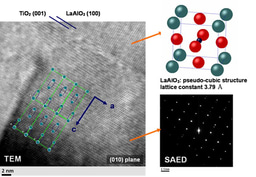It was only a few years ago that the field of ‘2D’ materials for photonics applications was completely dominated by one material. It is this material that, in 2004, Andre Geim and Kostya Novoselov famously peeled atomically thin flakes of from a lump of graphite using ‘sticky tape’. The material is of course graphene. However, graphene is no longer alone; there is now an extended family of related materials emerging, each bringing their own unique properties to the table for researchers to put to work.
In addition to materials based on carbon (graphene and graphyne), this family now includes thin films based on boron (borophene), germanium (germanene), silicon (silicene), tin (stanene), phosphorus (phosphorene) and hexagonal boron nitride. And, this is list is far from complete.
To highlight these emerging systems the April 2016 issue of Nature Photonics is a Focus Issue on 2D materials, with an emphasis on those with properties readily exploitable for optics applications.
As highlighted in the editorial, we have a review from Kin Fai Mak and Jie Shan on the transition metal dichalcogenides (TMDCs), like molybdenum disulfide and tungsten diselenide. Zhipei Sun, Amos Martinez and Feng Wang review optical modulators based on 2D materials such as graphene, TMDCs, black phosphorus and heterostructure combinations. Fengnian Xia from Yale University explains in his Interview why other materials such as black phosphorus and silicene are receiving interest from an optical point of view. We’ve also got Commentary from Andres Castellanos-Gomez, who explains the excitement around graphene and also delves into silicene and hexagonal boron nitride. By coincidence we even have three research papers in the same issue related to 2D materials. One is on the nature of the bandgap of hexagonal boron nitride, another is on ultrafast switching of infrared plasmons in graphene and the last shows the existence of plasmon modes on the edges of graphene cavities.
While there is good reason to be excited about these areas of research there are a lot of hopes being discussed and promises being made in the current literature and of course only time will tell how much of this comes to fruition. Castellanos-Gomez cautioned in his commentary that while the excitement is justified, we are in a stage of experimental infancy in terms of practical exploitation. In any case, we expect much to come from the field and hope this Focus Issue on 2D materials helps fan the fire.
David Pile (Senior Editor, Nature Photonics)




Please sign in or register for FREE
If you are a registered user on Research Communities by Springer Nature, please sign in